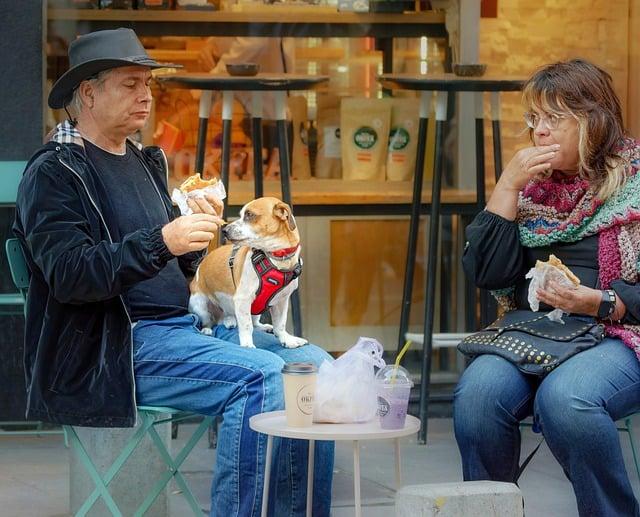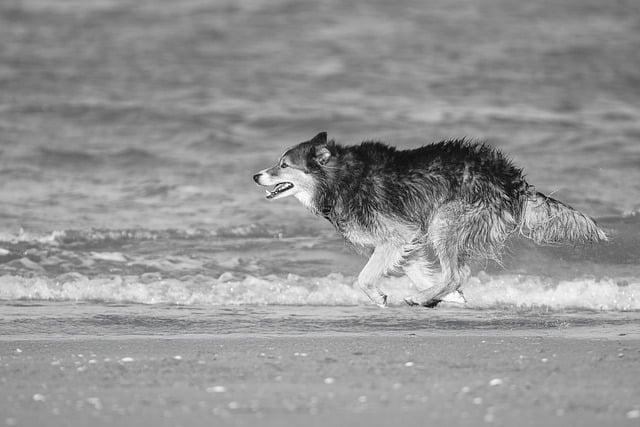As the sun dipped below the horizon, Sarah watched her dog, Max, frolic in the yard. Suddenly, he lunged at his friend, barking fiercely. Was he aggressive or just playing? Understanding the difference is crucial. Aggressive dogs display stiff bodies, growls, and direct stares, while playful pups exhibit loose movements, wagging tails, and playful barks. By observing these cues, you can ensure safe interactions and nurture a happy environment. Don’t leave it to chance—learn the signs and keep your furry friend safe!
Contents
- Understanding Canine Body Language for Accurate Interpretation
- Identifying Key Behavioral Cues That Distinguish Playfulness from Aggression
- Assessing the Context of Interactions to Determine Your Dogs Intentions
- Implementing Effective Training Strategies to Manage Aggressive Behaviors
- Q&A
Understanding Canine Body Language for Accurate Interpretation
Understanding your dog’s body language is crucial for distinguishing between aggression and playfulness. Dogs communicate primarily through their physical posture, facial expressions, and movements. By observing these cues, you can gain insights into their emotional state and intentions. For instance, a dog that is feeling playful may exhibit a relaxed body posture, with a wagging tail and a slightly open mouth, indicating a friendly demeanor.
In contrast, signs of aggression often manifest through tense body language. Look for **stiffness** in the dog’s stance, **raised hackles**, and a **fixed gaze**. These indicators suggest that the dog is feeling threatened or defensive. Additionally, a dog that is growling or barking with a low tone may be signaling discomfort or a desire to assert dominance. Recognizing these signs early can help prevent potential conflicts and ensure a safer environment for both your dog and others.
Another key aspect to consider is the context in which the behavior occurs. For example, if your dog is engaging in play with another dog, you might observe **play bows**, where the front legs are stretched forward while the rear remains elevated. This is a clear invitation to play. Conversely, if the same dog suddenly stops playing and becomes rigid, it may indicate that the interaction has escalated beyond comfort levels. Being aware of these shifts can help you intervene appropriately.
remember that each dog is unique, and their body language can vary based on breed, personality, and past experiences. It’s essential to spend time observing your dog in different situations to better understand their specific signals. By fostering this awareness, you can enhance your relationship with your dog and create a more harmonious environment, ensuring that playtime remains enjoyable and safe for everyone involved.
Identifying Key Behavioral Cues That Distinguish Playfulness from Aggression
Understanding the nuances of canine behavior is essential for any dog owner. When observing your dog interacting with others, it’s crucial to recognize specific **behavioral cues** that can help differentiate between playful antics and signs of aggression. One of the primary indicators of playfulness is the presence of a **play bow**, where your dog lowers its front legs while keeping its rear end elevated. This posture signals an invitation to engage in fun rather than a threat.
Another key sign of a playful dog is the **softness of their body language**. A relaxed stance, wagging tail, and open mouth are all positive indicators that your dog is enjoying the interaction. In contrast, an aggressive dog may exhibit a stiff body, raised hackles, and a closed mouth, which can indicate tension and readiness to confront. Observing these subtle differences can help you gauge your dog’s emotional state during playtime.
Vocalizations also play a significant role in distinguishing between play and aggression. Playful dogs often emit **high-pitched barks** or playful growls, which convey excitement and joy. On the other hand, aggressive dogs may produce deep, guttural growls or barks that signal discomfort or a warning. Paying attention to the tone and frequency of your dog’s vocalizations can provide valuable insights into their intentions.
consider the context of the interaction. Playful behavior is typically characterized by **reciprocal actions**, where both dogs take turns chasing or wrestling. If one dog consistently dominates the interaction without allowing the other to engage, it may indicate a more aggressive stance. By observing these dynamics, you can better assess whether your dog is engaging in friendly play or displaying aggressive tendencies.
Assessing the Context of Interactions to Determine Your Dogs Intentions
Understanding your dog’s behavior requires careful observation of the context in which interactions occur. Dogs communicate through a combination of body language, vocalizations, and situational cues. By paying attention to these elements, you can better discern whether your dog is engaging in playful behavior or displaying signs of aggression. Here are some key factors to consider:
- Body Language: A relaxed posture, wagging tail, and play bow (front legs stretched forward) typically indicate playfulness. In contrast, a stiff body, raised hackles, and a lowered head may signal aggression.
- Vocalizations: Playful dogs often bark in a higher pitch and may make playful growls. Aggressive dogs, however, tend to produce deep, guttural growls and may bark in a more threatening tone.
- Environment: The setting can greatly influence your dog’s behavior. If your dog is in a familiar, safe space, they are more likely to engage in play. Conversely, if they are in a crowded or unfamiliar area, their behavior may lean towards defensiveness or aggression.
- Interaction Partners: Observe how your dog interacts with different individuals or animals. A dog may play gently with familiar friends but react aggressively towards strangers or other dogs they perceive as a threat.
Another crucial aspect to consider is the duration and intensity of the interaction. Playful encounters are often characterized by bursts of energy followed by periods of rest. If your dog seems overly fixated on another dog or person, with little variation in behavior, this could indicate a more aggressive intent. Look for signs of escalation, such as increased barking or lunging, which may suggest that your dog is feeling threatened or challenged.
- Energy Levels: High energy and excitement are common in play, while aggression may manifest as a sudden spike in intensity, often accompanied by a change in vocalization.
- Play Signals: Dogs often use specific signals to indicate they are playing, such as the “play bow” or rolling onto their backs. If these signals are absent, it may be a sign of aggression.
- Response to Cues: A dog that is playing will typically respond positively to cues from their playmate, while an aggressive dog may ignore or react negatively to attempts to diffuse the situation.
consider your dog’s history and temperament. Some breeds are more predisposed to aggressive behavior, while others are naturally more playful. Understanding your dog’s unique personality can provide valuable insight into their intentions. If your dog has previously exhibited aggressive behavior, it is essential to approach new interactions with caution, even if they appear playful at first. By assessing the context of interactions and recognizing the signs of both play and aggression, you can create a safer environment for your dog and those around them.
Implementing Effective Training Strategies to Manage Aggressive Behaviors
Understanding the nuances of canine behavior is crucial for pet owners, especially when it comes to distinguishing between aggression and playfulness. To effectively manage aggressive behaviors, it is essential to implement training strategies that promote positive interactions. One of the most effective methods is to establish a consistent routine that includes regular exercise and mental stimulation. This not only helps to channel your dog’s energy but also reduces the likelihood of aggressive outbursts stemming from boredom or frustration.
Another key strategy is to utilize positive reinforcement techniques. Rewarding your dog for calm and appropriate behavior can significantly alter their response to various stimuli. Consider using treats, praise, or playtime as incentives when your dog exhibits non-aggressive behavior during potentially triggering situations. This approach fosters a sense of security and encourages your dog to associate positive experiences with previously stressful encounters.
Socialization is also a vital component in managing aggressive tendencies. Gradually exposing your dog to different environments, people, and other animals can help them develop confidence and reduce fear-based aggression. Start with controlled settings and gradually increase exposure as your dog becomes more comfortable. Remember to monitor their body language closely, as this will provide valuable insights into their comfort level and help you intervene before any aggressive behavior escalates.
Lastly, consider seeking professional guidance if aggressive behaviors persist despite your best efforts. A certified dog trainer or behaviorist can offer tailored strategies and support to address specific issues. They can also help you identify triggers and develop a comprehensive training plan that aligns with your dog’s unique personality and needs. By investing in effective training strategies, you can create a safer and more harmonious environment for both you and your furry companion.
Q&A
-
What are the signs of aggressive behavior in dogs?
Look for the following indicators of aggression:
- Growling or snarling
- Showing teeth
- Stiff body posture
- Direct eye contact or staring
- Raised hackles
-
How can I differentiate between play and aggression?
Consider these key differences:
- Playful dogs often have relaxed body language.
- Play usually involves a back-and-forth dynamic, while aggression is often one-sided.
- Playful barking is typically higher-pitched and accompanied by wagging tails.
- Aggressive behavior is often marked by low, deep growls.
-
What should I do if I suspect my dog is being aggressive?
Take these steps to ensure safety:
- Remove your dog from the situation calmly.
- Observe their behavior in different contexts.
- Consult a professional dog trainer or behaviorist for guidance.
- Consider socialization classes to improve their interactions.
-
Can I train my dog to reduce aggressive tendencies?
Absolutely! Training can help:
- Teach your dog appropriate social behaviors.
- Reinforce positive interactions with other dogs and people.
- Utilize positive reinforcement techniques to encourage calm behavior.
- Establish a consistent routine to help your dog feel secure.
understanding your dog’s behavior is crucial for fostering a safe and enjoyable environment. By recognizing the signs of aggression versus playfulness, you can ensure a harmonious relationship with your furry friend. Stay observant, stay informed, and prioritize their well-being.




